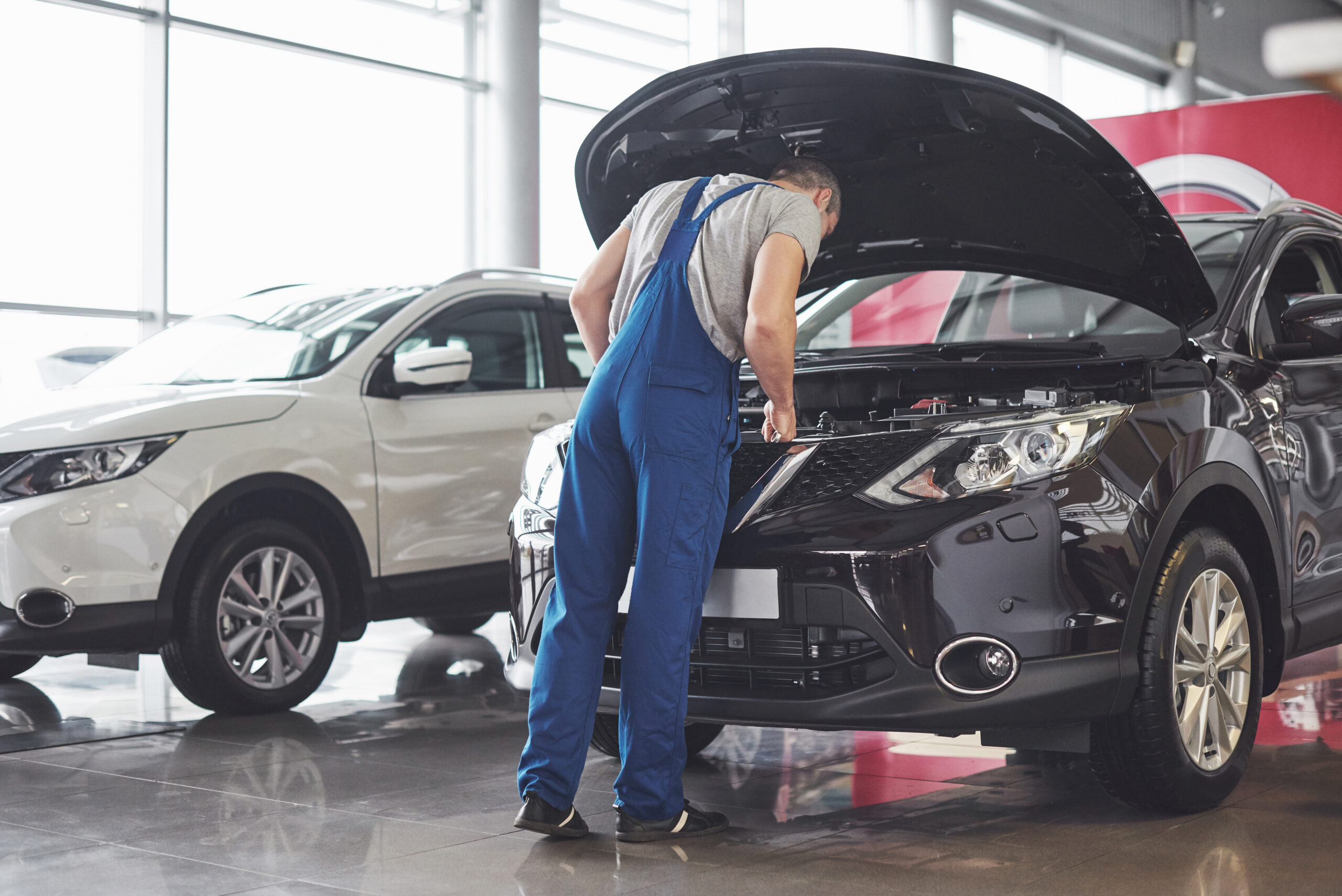[Guide] How to Optimize and Design Your Dealership Website for More Leads and Sales
![[Guide] How to Optimize and Design Your Dealership Website for More Leads and Sales](https://www.fullpath.com/wp-content/uploads/2023/03/ALS-blog-template-48-1.png)
Table of Contents
Table of Contents
[Updated July 2022]
Recently, I decided to buy a new smartphone online. After much research and deliberation, I chose a company. They offered far and away the best price. They had great shipping options. They had a coupon code for an even better price. But the site crashed every time I tried to place my order, and when I called customer service, they were not helpful. What should have taken 10 minutes took an hour– and I still had no new phone.
Am I going back to this site? You can bet I’m not, even though they had the best prices. I can’t get what I actually want from them– to buy the phone I want. Instead, I’m going to use a website that I can trust to actually give me not only a quality product, but also a great experience– fast, simple, and straightforward. I’m going to choose a company that makes my life easier and accomplishes my goals without taking a lot of time or causing a lot of hassle.
How my tale of woe is relevant for your dealership
It’s true that most car shoppers are not looking to actually make their next purchase online. But what they are doing is researching online– sometimes upwards of 14 hours– to choose the one, maybe two, dealerships they’ll visit in person. And while price is obviously a factor, today’s consumers are above all looking for an experience that makes their lives easier. In fact, more than half of car shoppers say they would choose a dealership with a better experience, even at a higher price.
Just think about all the things people do online these days. Order takeout? Check. Place and pay for their Starbucks order? Check. Pay their bills? Check. Convenience is king. And if your dealership can provide it for people doing research– looking for their next purchase, figuring out their trade-in, booking an oil change, whatever they’re doing– you will beat the competition for more customers and more sales.
In this guide, we’re going to cover everything you (and your website team) need to know in order to improve your car dealership’s website design and attract more customers and increase your sales.
Part 1: Strategies and best practices to optimize your car dealership website design:
Strategy #1: Provide Smart, Personalized Engagement
In your showroom, salespeople can respond in real time to every customer’s interests. They answer questions, they provide guidance, they read body language, they adjust to changing needs over the course of a conversation. In short, they provide a totally personalized experience.
Too often, this is not the case on dealership websites. Messaging and conversion tools can be generic and one-size-fits-all. The problem is that we know not everyone is looking for the same thing. Some shoppers are in early stages. Some are ready to buy. Some are looking for service. Some just need your phone number. The design of your automotive website should be able to respond to any of those scenarios– and not only that, but to respond to customer behavior on-site to offer them what they need before they even know they need it.
That means using the right AI tools for digital personalization. Think what you’ll be able to do:
- Track customer interests and behavior. Today’s AI tools can track how customers found your site– from an ad, or Facebook, or maybe a search for a particular vehicle in their area. Then, they can track these customers’ on-site behavior, including how many times they’ve been there before, what they are looking at, how much time they’re spending on each page, which photos and videos they’re clicking on– basically anything they are doing.
- Predict each customer’s next move. With this kind of data, AI tools can anticipate shoppers’ next need. So someone browsing your service page can be shown a service offer, or have the opportunity to book their repair straight from your website. Someone looking at a particular vehicle for the third time can see a special offer on that car. Someone who clicks on your address can be shown directions from their location.
This is the level of personalization your customers want: studies show that personalization can increase sales by 20%. It all starts with your car dealership’s website design.
Strategy #2: Offer Value-Driven Lead Capture
Another way to optimize your website is to make sure all your lead capture tools are designed to provide value to your customers. What kind of value? Anything that helps them check an item off their to-do list.
Customers on dealership websites might be trying to:
- see if you have the specific car they are looking for in stock
- find out how much it costs
- see if they can get a good deal
- check their trade-in value
- get directions to your store
- understand the features of a new model
Just to name a few. Each one of these tasks is a chance for you to provide value. And if your lead capture tools can do that, they will capture more leads.
For example: take chat. Ostensibly, chat is there to answer questions, but how many times have you asked a customer service chat a question, only to have them not know the answer, or demand your contact information before answering? This is a blatant grab for personal information, and the customer who hasn’t gotten the value they seek– ie, an answer to their question– will not want to hand over their details. Or let’s say there’s a discount on a popular vehicle, but to get it, customers have to fill out an extensive form that takes more than a minute or two. The customer who knows they want this vehicle might be willing to take that time– but someone who’s still deciding will likely x out of that offer and try to find a store that’s less demanding.
Tools that provide real value are tools that will help you get more customers.
Strategy #3: Maximize Data-Rich Lead Information
If you equip your site with the tools to send data-rich leads to your CRM, your follow-up becomes far more valuable in moving your customers along the buying process. How does this work?
If a lead comes in and all you can see is the vehicle of conversion, when your salesperson calls, all they can prepare to address is that vehicle.
When a lead comes in and you can see not only the point of conversion, but also all the pages viewed prior, all the visits to the site, all the time spend where before deciding– then your conversation becomes richer and more productive.
That is, a data-rich lead allows for a value-rich conversation. Just think of what a BDC or salesperson can do with comprehensive lead information when they’re making a call or greeting a customer in person. They can understand if a customer was on the fence before selecting a vehicle and address common questions. They can tell if research was extensive or surface-level, and offer guidance accordingly. They can see if a customer was browsing a particular car before starting the trade-in process. Armed with this data, salespeople can preempt questions or doubts, reassure, speak to common concerns, and, above all, move the process forward with value and without redundancy. Here too, an optimized site leads to more sales by allowing for better follow-up.
Experts say improved customer experience could increase auto sales by 25%. Starting that great experience online with seamless, personalized service is the best way to reach today’s customers and get more sales today.
Part 2: How to take your dealership’s mobile website design to the next level
It’s 2022. The experts have been talking about mobile optimization since the invention of the smartphone, and now it is difficult to find a website that does not have a designated mobile version. Dealerships have joined this trend as well, and have made changes to their sites in order to accommodate the changing landscape. With designed automotive websites that feature resized pictures and mobile navigation menus, many forward-thinking dealerships have embraced mobile shoppers’ preferences. There are also several lesser-known ways to get ahead of the pack, and take full advantage of your mobile website.
How did we get here?
Before we go into solutions, it’s important to ask: how did we get to this point? The first major shift occurred when car shoppers took their search online. On average, customers only visit 1-2 dealerships in person before making a decision. They spend over 14 hours conducting research. This makes reaching customers online even more important– it could mean the difference between closing a sale and losing it. Online shoppers look for sites that provide them with the content that they want to see, in a format that is easy to navigate.
Where is all of this research taking place? Studies have shown that people are doing even more research from their mobile devices. In fact, one found that 67% of car shoppers search for local businesses using mobile. 71% of respondents to one study reported using mobile during their purchase process. A study from Facebook showed that 2 in 5 shoppers preferred to book a test drive from their mobile device. And this trend is poised to grow– as more information and services become available to customers from their mobile devices, they will depend upon them as a primary method of surfing the web.
Millennials
Further, as millennials become a significant portion of car buyers, even more research will be conducted from mobile devices. While most millennials (62%) plan to purchase their next car from a dealership, and not online, they will undoubtedly utilize their mobile devices several times throughout their buying processes. One Google study found that 3 in 4 millennials utilize their mobile devices to perform online research at least as often as they use a desktop. 80% of millennials use their mobile device to perform at least one task during their car buying process. With this demographic becoming more likely to begin purchasing cars, dealerships are recognizing the need to optimize their sites for all mobile devices, phones as well as tablets.
Solutions
There are several ways for your dealership to improve its mobile presence, and the list is only growing. These strategies go above and beyond the typical “mobile optimization” tools that you’ve heard about, and will carry you into the mobile age.
Optimized Service Department
There is some debate about the relative worth of a service department, and how much revenue it should bring to your dealership, as opposed to your sales team. In terms of mobile, though, your service department has a leg up– people need service quickly. Imagine the scenario: a driver is sitting in a parking lot, when they see a “check engine” light turn on in their car. They hear that dreaded “squeaky noise” as they brake at a red light. As soon as they can, they begin to search for service options near their home or office. Most of these searches will come from their smartphones, as they need an answer quickly, wherever they are. Making sure your service department is optimized for and easy to navigate from mobile will improve your chances of people coming to your dealership. And who knows– those service customers could later become car buyers if they’re happy with their experience at your dealership.
Mobile-Friendly Tools to Optimize and Design Your Automotive Website
Even if your entire automotive website is designed and optimized for visitors, it is important to ask– are all of your tools? If within 10 seconds on your site a visitor is met with an over or undersized pop-up, CTA, or banner, it is not truly optimized for mobile. If your various tools do not interact well on mobile, and overlap or block your site, your mobile visitors will be driven away. When looking for vendors, be sure to verify that they offer a mobile version of their tools. Further, always check how a certain tool will interact with your existing tools on mobile as well as desktop. By not taking these steps, you are losing out on leads who are increasingly searching for your dealership from their mobile devices.
Listing on Google Maps
People conduct searches for dealerships near them, utilizing location services on their phones and devices. Users actually search things like “Honda Dealership Near Me,” or “Service my car in (zip code).” Being well-versed in SEO, you know that you want your dealership’s website to appear close to the top of their search results. But between paid ads and Google Maps listings, most mobile searchers don’t even see the organic results– it takes too much scrolling to get to that part of the screen (their fingers might get tired!). Listing your business on Google Maps is an excellent way to get above the fold, even if you are not prepared to start on a Google ads campaign. If you don’t, the average mobile searcher will most likely not even find your dealership through their searches.
Apps
More advanced dealerships can also look into developing a mobile app. According to one study, car shoppers who used a branded app were 73% more likely to buy from that dealership, and booked 25% more service appointments after making a purchase than shoppers without an app. Apps also give dealerships a competitive edge in terms of its targeting customers: using geofencing, for example, a dealership can send a notification about a great offer to all users in a certain area. Dealerships that used geolocation tactics actually reported a 295% increase in foot traffic. Apps and notifications provide a dealership another medium through which to follow-up with its customers in an unobtrusive manner. These are just a few ways that apps can help to retain customers and increase your bottom line– and the technology is always expanding.
Even if your car dealership website is designed completely mobile-friendly, there are still many ways to improve your mobile customers’ experience. Because mobile users are going to continue to make up an even greater proportion of car shoppers, optimizing and improving your dealership’s mobile presence will help to gain more leads and increase your bottom line.
Part 3: UX lessons you can use when designing your car dealer website
We learned a number of lessons from this automotive website design process:
- Evaluate your performance. The reason we decided to make changes to our own product was from setting goals and tracking them– and seeing that these goals weren’t being met. So we took a look at it and asked: can we make the look more appealing? Can we write better copy? Can we add images that make the experience more intuitive and inviting? When you’re excited about something, it can be hard to have to change it, but ultimately, digging into your user data for constant evaluation is the only way to make sure you’re succeeding.
- What you think will work is not necessarily what will actually work. We were pumped about our original coin and notifications, and it seems to follow that what you love is what other people will also love. But this is not the case. Listening to feedback is the only way to really know if things are working.
- UX is about a light touch. When it came to improving our widget coin and notifications, it turned out less was more. We didn’t need more text– we needed images that helped people intuitively understand what they could accomplish. We didn’t need to make the tool more aggressive– we needed to make it more inviting. The idea is to make everything so clear that shoppers don’t need to exert any effort figuring out what your tools do, or experience any friction getting what they need.
- Don’t be afraid to try new things. If you don’t experiment, you won’t have the chance to improve. And if your experiment doesn’t work? Try something else. Nothing is ever set in stone.
- Look at something that’s not doing that well as an opportunity for growth. Our widget was simply not getting the engagement we knew it should– and therefore not helping car shoppers do what they wanted on dealership sites, and not helping dealerships get enough conversions. So we needed to take that failure and see how we could grow from it. Having the opportunity to step back and see our product through customers’ eyes gave us the opportunity to improve the experience for them– and conversion rates for dealerships.
So it turns out that failure is not all bad. It’s just one step on the way to greater success.
Part 4:VIDEO – Declutter your website and tighten your VDPs
It can be hard to find the time to listen to a full-length webinar about designing your automotive website.
But what about a mini-webinar? Seven minutes of quick, useful advice on how to enhance your dealership’s website design.
Our very own Director of Marketing, Ilana Shabtay, did a mini-webinar with our friends over at DealerRefresh and we thought you’d like to watch it today.
Why?
Because she shares some great tips for optimizing your website for conversions by:
- Eliminating all the distractions keeping your customers from moving forward
- Making sure your website design actually reflects your dealership’s goals
- Creating and measuring your VDPs for success
Think about it: you might have an early-stage shopper on your website looking to do research. They need to be able to find the information they came for- and not get overwhelmed by too many CTAs or popups, or confusing navigation.
Or you might have a later stage shopper dead-set on a particular vehicle. Are they seeing appropriate offers designed to grab their attention at the right moment and help them move forward?
Or you might not have enough photos, videos, and feature explanations on your VDPs- and visitors, who typically spend the majority of their time browsing vehicles on your site, can’t find what they need.
The idea is to provide a great user experience as part of a great customer experience, and the fact is, these areas are often neglected by companies, thinking that bringing traffic to their websites is the most important thing.
And it is important- if no one is seeing your website, what’s the point?
But having people merely see your website and not take any action on it costs dealerships a lot of money. All that cash spent on targeting and retargeting, only to have visitors arrive on a website that does not actually engage them so that they become paying customers. That’s like focusing all your energy on the advertising that will bring customers to your showroom, and then having a poor experience with no helpful salespeople when they arrive.
That would never happen at your showroom, and it doesn’t need to happen on your website either.
Check it out and let us know what you think!
Looking to optimize and redesign your automotive website? Schedule a demo with us today.
Fill out this form to schedule a personalized demo today!
Feel free to tell us more about you so we can personalize your demo.
Sign up for our newsletter!
We value privacy and would never spam you. We will only send you important updates about Fullpath.



